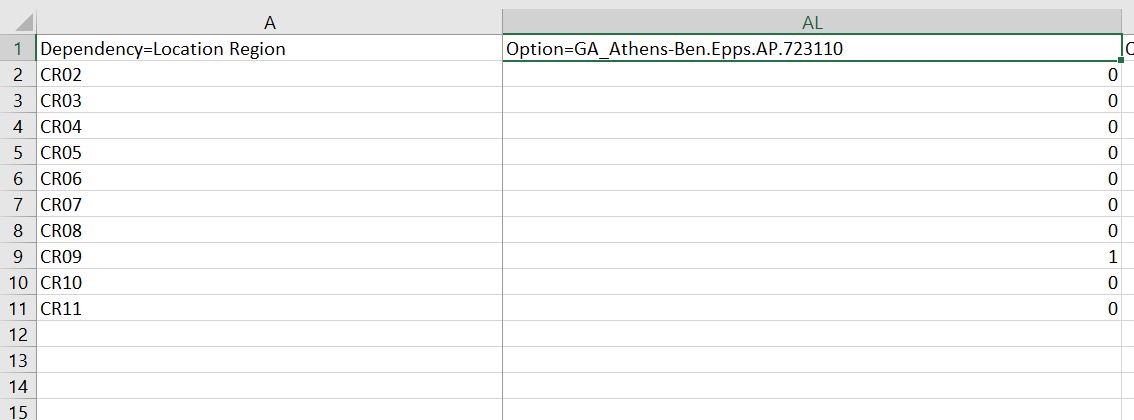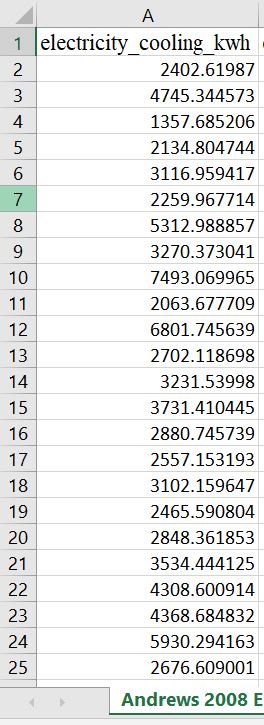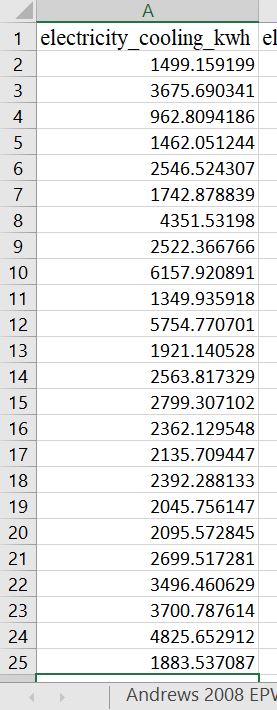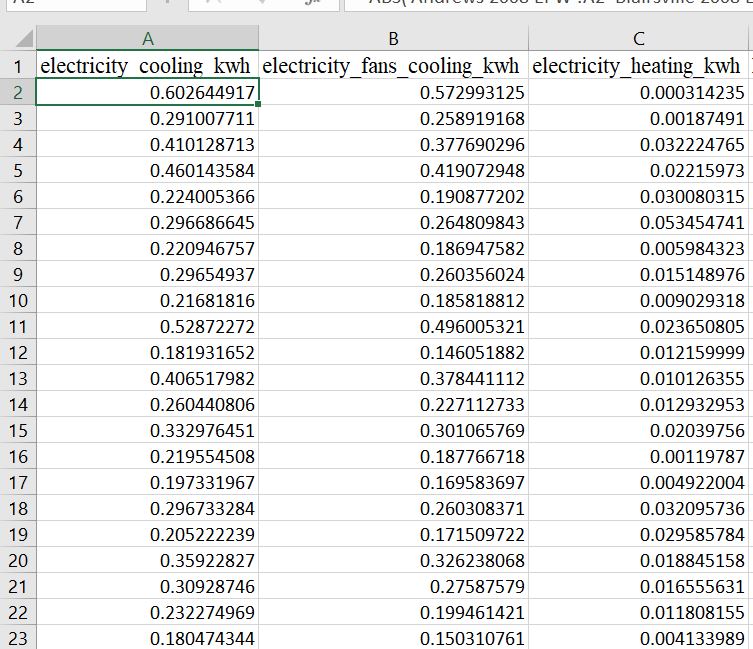Hi all.
Specific details of my system: using ResStock v2.2.4 with OpenStudio/PAT v2.9.0. I am trying to model a specific residential community in Georgia. I have obtained two different EPW files to represent the territory. One EPW file is from Blairsville GA, which is more representative of the community, and the other EPW file is from Andrews NC Airport. Ideally, I would just use Blairsville EPWs for my analysis, but unfortunately they only have 1 year of data (2008). Andrews NC has 10 years worth of data, including 2008.
I created two sets of results.csv files, one per EPW file. Based on the relative proximity of the EPW stations, I expect the results to be very similar. Ideally, in order to use Andrews EPW files for my analysis, the results should match those using the Blairsville EPW as close as possible. I fixed the heating equipment to be Electric Baseboard and the cooling equipment to be a SEER 8 AC in the Apply Upgrade measure.
In order for PAT to recognize the EPW file, I had to rename both EPW files to 0979938_US_GA_Clarke_13059_0-20000-0-72311_33.97_-83.34_NSRDB_2.0.1_AMY.epw before zipping the files and creating direct download links for input in PAT. I additionally specified the nearest location I could find in the Location.tsv file, which was Athens-Ben Epps Airport:

I also specified AMY = 1 in Location Weather Year TSV file in housing_characteristics, and edited the EPW so that PAT would recognize it as a leap year by changing "No" after DAYLIGHT SAVINGS 
to "Yes" (Tuesdayy to Tuesday was also corrected).

When looking at the results for heating and cooling energy use fields, there is a large discrepancy between values. I quantified this error by calculating the absolute difference between values, and dividing by the blairsville-value ie abs(andrews_value-blairsville_value)/blairsville_value. Using data presented below, a sample calculation would be abs(2402 kwh-1499 kwh)/1499 kwh = 0.602. The "percent error" for cooling_electricity_kwh can be as large as 0.70 (70%), which does not bode well if I am trying to say that Andrews EPW file is representative of the community. Below is a column of cooling_electricity_kwh using Andrews EPW:

Below is a column of cooling_electricity_kwh using Blairsville EPW:

Below is percent error calculated via specified formula for electricity_cooling_kwh:

It is totally possible that difference between the weather files is causing this discrepancy between results, in which case I would just need to qualify that in my research or find different weather files other than Andrews AP to model the community.
What else could explain such a large discrepancy between the results? Considering that the EPW stations are only 65 m in elevation apart, I wouldn't have expected such a large difference in climate or average temperature, so why would cooling energy use be so different? What is also weird is that the electricity_heating_kwh percent error is much lower on average than the cooling error (ie heating energy use agrees to a much larger degree between the two EPW files than does cooling energy use).




